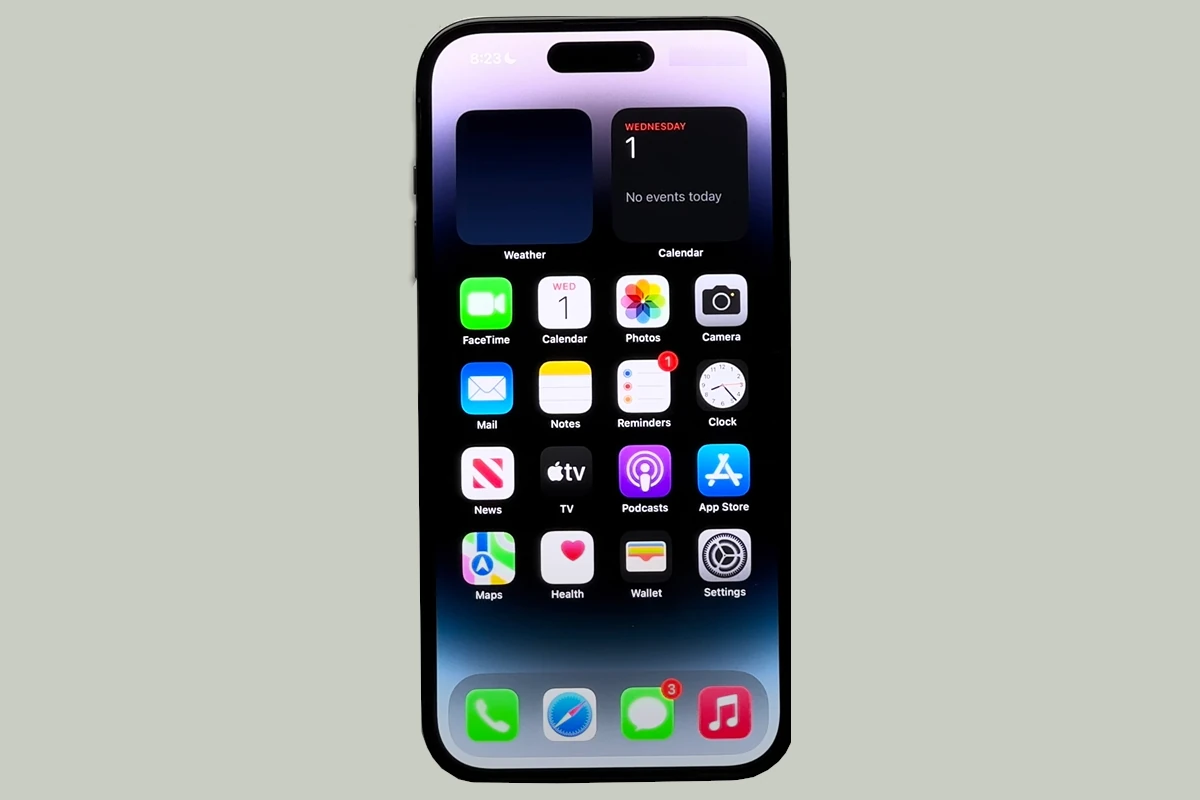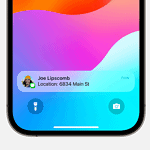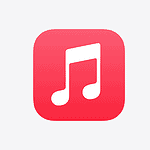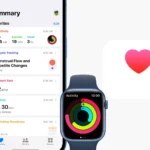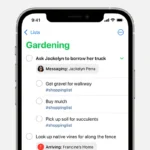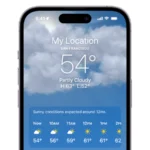Personalizing your iPhone’s home screen can make your device feel uniquely yours. You can change your iPhone home screen by selecting a new wallpaper and rearranging your apps and widgets. This simple process lets you refresh your phone’s look and improve its functionality.
Updating your home screen is easy and fun. You can choose from Apple’s built-in wallpapers or use your own photos. Add widgets for quick access to information and organize your apps into folders. These changes can help you use your phone more efficiently and enjoy its appearance more.
| Home Screen Element | Customization Options |
|---|---|
| Wallpaper | Photos, Live Photos, Dynamic |
| Apps | Rearrange, group into folders |
| Widgets | Add, resize, stack |
Change iPhone Home Screen: Quick Guide for Personalization
Your iPhone’s Home Screen doesn’t have to look the same as everyone else’s. With iOS updates (especially iOS 18), Apple has made it easier than ever to customize your layout, widgets, and app icons to match your style and needs (source: Apple Support, Tom’s Guide).
1. Rearrange Apps
- Tap and hold any app until it wiggles.
- Drag it to a new spot or onto another app to create a folder.
- Release when it’s where you want it.
💡 Tip: You can move apps between screens by dragging them to the edge.
2. Add Widgets
Widgets show info at a glance (weather, calendar, battery, etc.).
- Tap and hold the Home Screen → tap “+” in the top-left corner.
- Browse available widgets and tap Add Widget.
- Drag to adjust placement, then tap Done.
3. Customize App Icons
Want a unique look? Use the Shortcuts app:
- Open Shortcuts → + → Add Action → Open App.
- Choose the app you want, then tap the share icon → Add to Home Screen.
- Tap the icon to replace it with a custom image (from Photos or Files).
- Name it and tap Add.
4. Change Wallpaper
- Go to Settings → Wallpaper → Add New Wallpaper.
- Choose from Apple’s collections, your photos, or dynamic wallpapers.
- Set different wallpapers for Lock Screen and Home Screen.
5. Use Focus Modes for Different Layouts
- Go to Settings → Focus (e.g., Work, Personal, Sleep).
- Each Focus mode can have its own Home Screen pages, showing only the apps and widgets you need at that time.
6. Hide or Show Entire Pages
- Tap and hold the Home Screen → tap the dots at the bottom.
- Select/deselect pages to hide or show them.
- Great for keeping a clean layout while still storing apps.
⚡ Quick Personalization Tips
- 🎨 Match widget colors & wallpapers for a theme.
- 📂 Group apps by function (work, social, entertainment).
- 🕹️ Keep frequently used apps on the first page.
- 🌙 Use Focus modes to reduce distractions.
Final Thought
Customizing your iPhone Home Screen is about more than looks—it’s about making your device work for you. With a few tweaks, you can create a screen that’s clean, stylish, and efficient.
Understanding the iOS Home Screen
The iOS Home Screen has evolved significantly with recent updates. It now offers more customization options and intuitive controls for users to personalize their iPhone experience.
Evolution from iOS 16 to iOS 18
iOS 16 introduced widgets to the Home Screen. This change allowed users to add informative tiles alongside their app icons. iOS 17 built on this by improving widget interactivity.
iOS 18 takes customization further. You can now change app icon colors and sizes directly from the Home Screen. This update also brings automatic color theming based on your wallpaper.
A key addition in iOS 18 is the ability to create custom layouts. You’re no longer limited to the standard grid. You can group apps in unique patterns or leave open spaces for a cleaner look.
Components of the Home Screen
Your iPhone’s Home Screen consists of several elements:
- App icons
- Widgets
- Dock
- Status bar
- Search bar
| Component | Function |
|---|---|
| App icons | Launch applications |
| Widgets | Display quick information |
| Dock | Hold frequently used apps |
| Status bar | Show device status |
| Search bar | Find apps and content |
Widgets come in various sizes. You can choose from small, medium, or large options to fit your layout preferences. The Dock remains accessible across all Home Screen pages.
Interacting with the Control Elements
To edit your Home Screen, press and hold any empty area. This action puts your icons in “jiggle mode”. You can then drag apps, resize widgets, or access the App Library.
iOS 18 introduces gesture controls for faster customization. A two-finger pinch on an app icon lets you quickly resize it. Swiping down on an icon reveals a color palette for easy tinting.
The Control Center is another crucial interface element. Swipe down from the top-right corner to access toggles for Wi-Fi, Bluetooth, and other settings. You can customize which controls appear here in the Settings app.
Personalizing Your Home Screen Layout
Customizing your iPhone home screen allows for a more organized and efficient user experience. It also provides opportunities to express your personal style through aesthetic choices.
Organizing Apps and Folders
To move apps on your home screen, press and hold an app icon until it jiggles. Drag it to your desired location. You can also create folders by dropping one app onto another. Name folders to categorize apps logically.
Group similar apps together for easy access. Put your most-used apps on the first page or in the dock. Consider using emoji in folder names for quick visual recognition.
Try arranging apps by color or function. This can make finding what you need faster and more intuitive.
Using the App Library for Efficiency
The App Library automatically organizes all your apps into categories. Access it by swiping left past your last home screen page. This feature helps declutter your main screens.
You can choose to have new app downloads appear only in the App Library. To do this, go to Settings > Home Screen and select “App Library Only” for newly downloaded apps.
Use the search bar at the top of the App Library to quickly find any app. This can be faster than swiping through multiple home screens.
Customizing with Widgets and Smart Stacks
Widgets provide at-a-glance information without opening apps. Add them by long-pressing the home screen, tapping the “+” icon, and choosing a widget. Resize widgets by selecting small, medium, or large options.
Smart Stacks combine multiple widgets that automatically rotate based on your usage patterns. Create a Smart Stack by dragging widgets on top of each other.
Place widgets strategically. Put calendar widgets near work-related apps or weather widgets next to your travel folder for quick access to relevant information.
Implementing Aesthetically Pleasing Wallpapers
Choose wallpapers that complement your app icons and widgets. You can use Apple’s built-in options or select personal photos from your gallery.
Consider using dynamic wallpapers that change throughout the day. These can add visual interest without cluttering your screen.
For a cohesive look, try using a color palette that matches your most-used app icons. This creates a harmonious visual experience across your home screen.
| Customization Element | Benefits | Tips |
|---|---|---|
| App Organization | Improved accessibility | Group by function or color |
| App Library | Reduced clutter | Use for less frequently used apps |
| Widgets | Quick information access | Combine in Smart Stacks |
| Wallpapers | Personal expression | Match with app icon colors |
Enhancing Functionality with Widgets and Shortcuts
Widgets and shortcuts transform your iPhone home screen into a powerful command center. These tools boost productivity and provide quick access to essential information and actions.
Adding and Customizing Widgets
iOS 14 and later versions allow you to add widgets directly to your home screen. To start, long-press an empty area on your screen and tap the “+” icon. Choose from various widget sizes to fit your layout preferences.
Smart Stack widgets offer multiple functions in one space. They rotate automatically based on your usage patterns. You can customize their order or disable this feature for manual control.
Some apps provide several widget options. Calendar widgets, for instance, can show your next appointment or a monthly view. Experiment with different styles to find what works best for you.
Leveraging the Shortcuts App for Quick Actions
The Shortcuts app lets you create custom actions for faster task completion. You can add these shortcuts to your home screen as app-like icons.
Popular shortcuts include:
- Setting multiple alarms at once
- Sending pre-written messages
- Calculating tips
- Playing specific playlists
To create a shortcut:
- Open the Shortcuts app
- Tap “+” to make a new shortcut
- Add actions and customize as needed
- Tap “Add to Home Screen” to create an icon
Exploring Third-Party Widgets and Customization
Many third-party apps offer widgets to enhance your home screen. Widgetsmith is a popular choice for creating custom widgets with personalized designs.
These apps allow you to display:
- Weather forecasts
- Fitness data
- News headlines
- Photo galleries
Some even let you change widget colors and fonts to match your aesthetic preferences.
| Widget Type | Examples | Key Features |
|---|---|---|
| Built-in | Clock, Weather, Calendar | System integration |
| Third-party | Widgetsmith, Carrot Weather | High customization |
| Shortcut | Custom actions | Automated tasks |
Remember to regularly update your apps for the best widget performance and newest features.
Advanced Home Screen Customizations
iOS 18 brings powerful new options to personalize your iPhone’s home screen. You can create custom icons, use live photos, and integrate social media apps for a truly unique look.
Creating Unique App Icons with Custom Designs
Customizing app icons lets you match your phone’s aesthetic perfectly. To change an icon:
- Open the Shortcuts app
- Tap the + to create a new shortcut
- Choose “Open App” and select the app
- Tap the three dots, then “Add to Home Screen”
- Tap the icon and select “Choose Photo”
Pick any image from your library or design your own. This method creates a shortcut, not replacing the original app. Keep both or hide the original in the App Library.
Pro tip: Use apps like Canva or Procreate to design cohesive icon sets.
Utilizing Live Photos and Depth Effect
Live Photos bring movement to your home screen. To set one:
- Go to Settings > Wallpaper
- Choose a Live Photo
- Tap “Set as Wallpaper”
- Enable “Live Photo”
The depth effect adds dimension, making your wallpaper pop behind apps. It works best with photos that have a clear foreground and background. Enable it in the same wallpaper settings.
Streamlining Notifications and Social Media Integration
Optimize your home screen for efficiency with smart notification management:
| App Type | Recommendation |
|---|---|
| Social Media | Use widgets for quick updates |
| Create a folder for easy access | |
| Messaging | Keep on main screen for visibility |
Customize your widgets to display key info without opening apps. For social media, consider:
- Twitter widget for latest tweets
- Instagram widget to showcase recent posts
- Facebook widget for event reminders
Group similar apps in Smart Stacks to save space while keeping information accessible.
Frequently Asked Questions
Customizing your iPhone’s Home Screen and Lock Screen offers numerous personalization options. You can tailor layouts, wallpapers, and settings to suit your preferences.
How can one customize the Home Screen layout on an iPhone?
To customize your iPhone Home Screen, start by entering “jiggle mode.” Touch and hold an empty area until the icons shake. You can then drag apps to rearrange them or create folders.
Add widgets by tapping the plus sign in the top left corner. Choose from various sizes and styles to display information at a glance.
To remove an app, tap the minus sign on its icon. You can either delete it or move it to the App Library.
What are the steps to change the background image of the iPhone’s Home Screen?
Changing your Home Screen wallpaper is simple. Go to Settings > Wallpaper > Choose a New Wallpaper. Select from Apple’s stock images or pick a photo from your library.
You can set the wallpaper for both Home Screen and Lock Screen or choose different images for each. Adjust the image by pinching and dragging to frame it perfectly.
How does one set a default Home Screen on an iPhone?
To set a default Home Screen, swipe left or right to the page you want as your main screen. Tap the dot row at the bottom to open the edit menu.
Tap the checkmark icon below your chosen page to set it as the default. This page will now appear first when you unlock your iPhone.
What is the process for modifying the iPhone Lock Screen wallpaper?
To change your Lock Screen wallpaper, press and hold the Lock Screen until it zooms out. Tap the plus icon to add a new wallpaper or swipe to select an existing one.
Choose a photo, then customize it with filters, widgets, or text styles. Tap “Add” when you’re satisfied with your design.
How can the display time for the Lock Screen on an iPhone be adjusted?
To adjust your Lock Screen display time, go to Settings > Display & Brightness > Auto-Lock. Choose a duration from 30 seconds to 5 minutes.
A longer display time keeps the screen on longer but may use more battery. Pick a setting that balances convenience and power efficiency.
Is it possible to change the Home Screen and Lock Screen independently on an iPhone?
Yes, you can set different wallpapers for your Home Screen and Lock Screen. When choosing a wallpaper, you’ll see options to set it for “Lock Screen,” “Home Screen,” or “Both.”
This allows you to have a clean background for your apps while enjoying a more detailed image on your Lock Screen.
| Feature | Home Screen | Lock Screen |
|---|---|---|
| Widgets | Yes | Yes |
| App Icons | Yes | No |
| Time Display | No | Yes |
| Wallpaper | Customizable | Customizable |
| Quick Actions | No | Yes |

